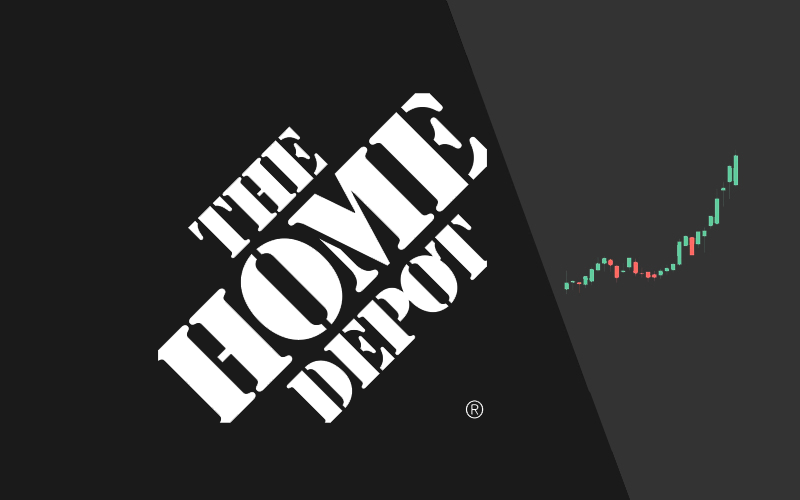- Home Depot sees strong demand for its home improvement products and services amid the pandemic-driven stay-at-home. The company is particularly a beneficiary of people shifting travel and entertainment budgets to other priorities, and in this case, updating indoor and outdoor spaces. While the iron is still hot, the company is moving to cement its leading position in the home improvement retail market by closing the HD Supply acquisition.
- All the factors are in place for Home Depot to maintain strong revenue growth. Besides the HD Supply acquisition, second stimulus checks and distribution of COVID-19 vaccines promise to drive more home improvement spending and sales for Home Depot.
- Some investors have moved to take profits after seeing Home Depot stock soar on strong Q3 results. That has resulted in the stock pulling back and opening an entry opportunity for those waiting for a chance to board the Home Depot train.
What does Home Depot do?
Home Depot Inc. (NYSE: HD) is the largest home improvement retailer in the world. The company was founded in 1978 and went public in 1981. It operates a network of nearly 2,300 stores. The U.S. is Home Depot’s largest market as about 2,000 of those stores are found in the country.
In addition to the stores, the retailer sells online. It sells tools, appliances, furniture, and a broad range of home building and remodeling materials. It also offers home improvement services. Home Depot serves both professional contract and DIY consumer markets.
The retailer offers a credit card that allows them to purchase tools and materials and pay later for its loyal customers. Customers get up to two years to repay the items bought on credit.
Home Depot has grown both organically and through acquisitions. The retailer has bought several companies to expand and diversify its business. They include acquisitions to strengthen the retailer’s online presence.
Notable Home Depot acquisitions include Interline Brands, which provides maintenance, repair, and operation (MRO) products to professional contractors. Home Depot bought Compact Power Equipment in 2017 to expand into the equipment rental business. It also completed the purchase of leading industrial products distributor HD Supply this month (December 2020) in an $8 billion deal. The acquisition will strengthen Home Depot’s position in the $55 billion MRO marketplace.
HD Supply was originally a Home Depot unit but the retailer sold in 2007 to a group of private equity firms led by Carlyle Group and Bain Capital.
Why should you add Home Depot to your portfolio?
Home Depot had been a significant beneficiary of the COVID-19 pandemic. People are staying home more working or playing, and they see more areas of the indoor and outdoor spaces that need reworking.
This is driving home improvement spending. There is more indoor and outdoor upgrade work going on to create working spaces or expand playgrounds. With reduced business and leisure travel, many people shift their travel and entertainment cash to home improvements, which bodes well for Home Depot.
The low-interest rates also mean people have access to cheap credit, which encourages improvement spending and fuels sales at Home Depot.
But the pandemic will pass. The great thing about Home Depot is that it is well-positioned from the balance sheet and market perspective to continue thriving post-pandemic. First, the retailer has the balance sheet strength to invest or make strategic acquisitions to enhance its business.
Second, housing demand is going to increase as more millennials start families. That should continue driving home improvement spending and sales at Home Depot.
The global home improvement market continues to expand at a healthy pace, and Home Depot is well-positioned to take advantage of the growth. The market is on track to exceed $1.1 trillion in 2025 from $800 billion in 2018. The need to reduce electricity costs and regulations on green building are fueling home improvement spending. North America, which Home Depot dominates, accounts for half of the global home improvement spending.
A primary concern many investors have with traditional retailers is tech disruption. Indeed, Amazon is taking business from most legacy retailers. But Home Depot has proven to be a tough one to disrupt. Many items that Home Depot sells are large and bulky that would give Amazon a headache trying to deliver to customers.
Home Depot has impressive fundamentals
Home Depot reported Q3 revenue and earnings that increased from a year ago and topped consensus estimates as the retailer continued to benefit from the pandemic-driven home improvement spending.
The company generated revenue of $33.5 billion in the quarter, rising from $27.2 billion a year ago and topping Wall Street estimate at $32 billion. It made a profit of $3.4 billion, resulting in an EPS of $3.18. That compared with year-ago EPS of $2.53 and exceed Wall Street estimate at $3.06.
Amid the e-commerce shift, online shares are closely watched by investors. Home Depot’s online sales surged 80% in Q3. Most Home Depot’s online shoppers choose to pick up their items at the retailer’s stores.
In demonstrating its strong fundamentals and confidence boost to investors, Home Depot has decided to increase wages for its frontline staff. The pay increase will cost the retailer an additional $1 billion annually. The company’s balance sheet is in great shape. It has ample cash of $14.7 billion and manageable debt of $32.8 billion.
Home Depot’s technicals inspire confidence
Home Depot’s technicals align well with its fundamental standing and offer the reassurance of a continued uptrend. Investors piled into Home Depot after the company reported strong Q3 results, sending the stock close to $293.
But some investors have since moved to book profits, pulling down the stock. At $270 as of December 24, Home Depot is resting on a solid support base. Potential Home Depot investors, the pullback opens up an impressive entry opportunity.
Second, stimulus checks and distribution of COVID-19 vaccines stand out as catalysts for Home Depot. As it happened in the first instance, many people spent their stimulus checks on home improvements, and you can expect the trend to stay the same.
The vaccines should give more millennials confidence to move out of their parents’ homes, and that would, in turn, boost home improvement demand.
Conclusion
A look at Home Depot’s fundamentals and technicals shows the stock has the strength to continue outperforming the market. We recommend BUY.



